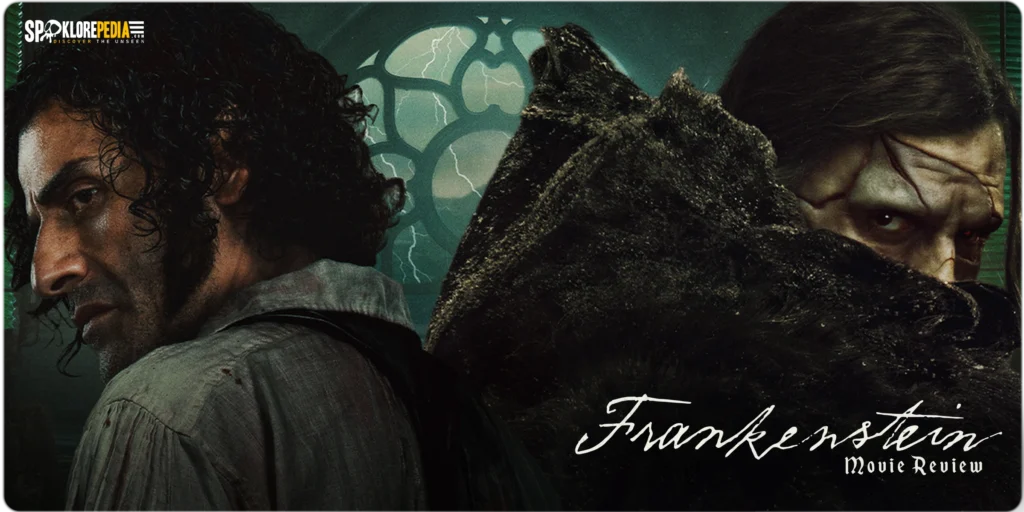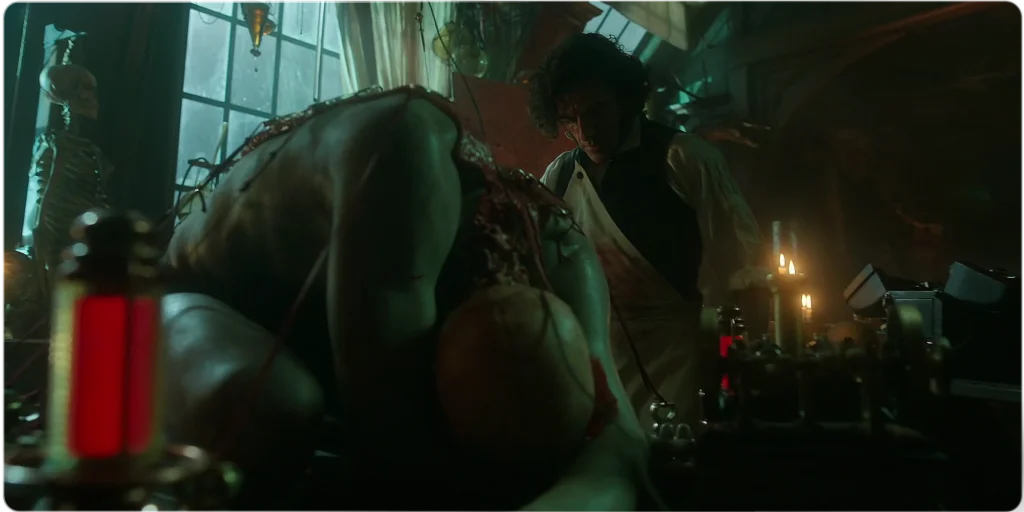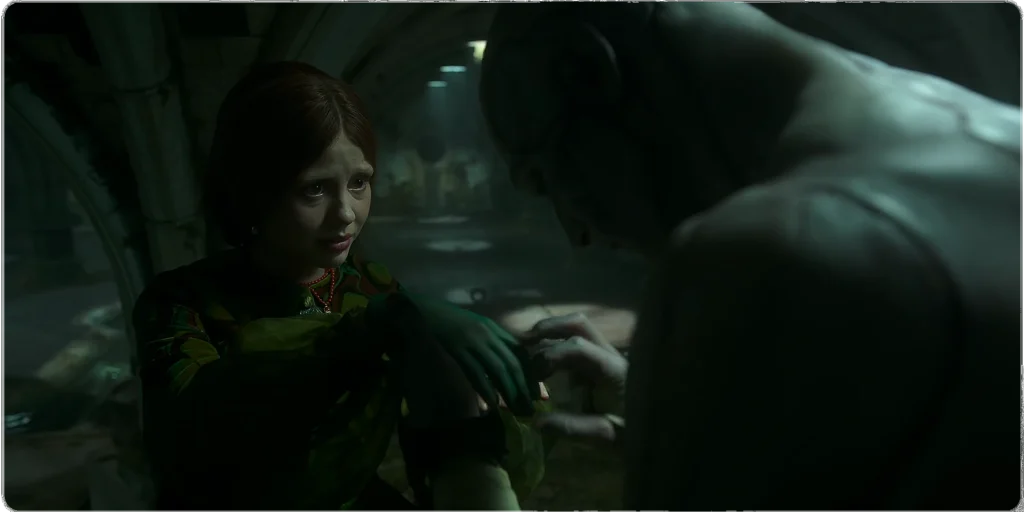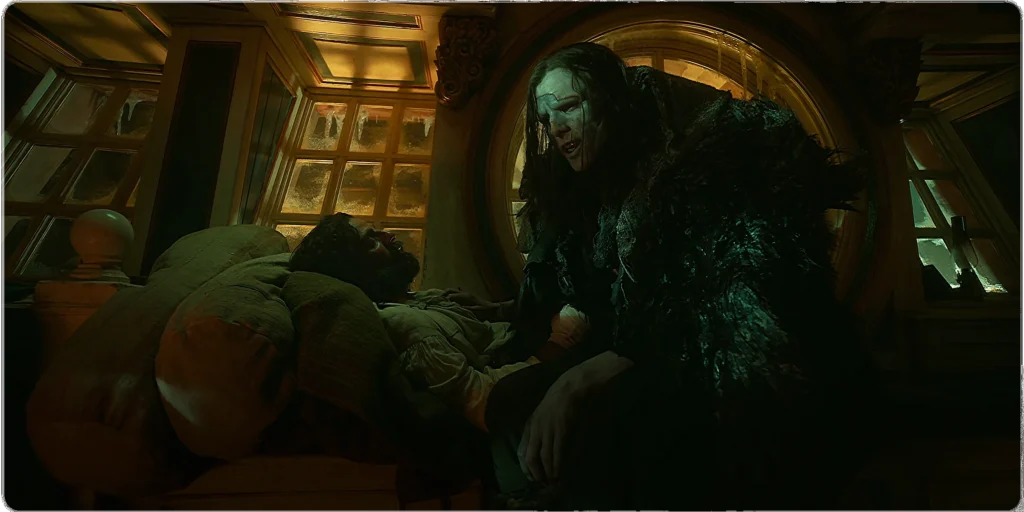Guillermo del Toro’s Frankenstein: A Review
Rooted in Pain and Inheritance

Introduction
A fresh take on a classic invites close attention. In his new film, Guillermo del Toro shifts the tale of Frankenstein away from pure terror and toward a quiet study of wounds that pass from one life to another. This Frankenstein movie review explores how the film builds a story about creation, abandonment and the long shadow of grief. The approach feels calm and steady, yet the themes land with force. Because the film deals with trauma and legacy, it feels both familiar and new.

A Story That Begins With Loss
Del Toro creates an expansive world that’s defined by absence. Victor Frankenstein grows up with an authoritarian father who prioritizes order over warmth; upon her premature death, this gap widens further causing Victor to grow without warmth and learn to conceal his hurt; Del Toro depicts this process through short scenes and tight frames to show that every wound counts for something.
Although the story follows an age-old pattern, its emotional structure differs significantly. Here, trauma does not remain at bay but instead propels Victor’s decisions and life decisions, from animation’s initial spark through creature manifestation and presence onstage, until ultimately feeling heavy as grief remains present and weighs heavy upon the room as Vic leaves it all behind him.

The Creature And The Maker
At the center of Del Toro’s film lies its protagonists’ relationship: Victor and the creature. From an initial point-of-contact between these two figures comes an intimate partnership; but quickly turns sour when Victor cannot accept what has come of him in terms of self-loathing; something which the creature feels keenly due to Victor renouncing his past creation. Their shared pain shapes their actions so easily; both mirror each other.
Further, Del Toro uses silence and stillness as language during her performance of this creature’s search for belonging. She moves slowly as though each step must earn its right to exist – keeping audiences closer to experiencing his experience than with spectacle-driven performances alone. This approach keeps audiences involved emotionally.

Generational Trauma And Its Echoes
Frankenstein movie reviews typically center around its treatment of generational trauma. Del Toro makes this theme clear; Victor inherits patterns of cruelty from his father before passing them along to the creature and in turn reinforcing this cycle – inviting viewers to see this chain for what it truly represents: an echoing chain of hurtful associations.
All throughout the narrative, each moment of pain feels connected to something older. When Victor reacts angrily, we cut to his memories of his father; when the creature reacts angrily due to exclusion rather than malice. These choices help maintain short emotional lines so the viewer understands and comprehends trauma’s logic more readily.

A Shift In The Myth
Del Toro does not repeat the traditional structure. Instead, he adjusts the myth so the story becomes a dialogue between two wounded figures. Victor no longer stands as the brilliant but detached scientist. He appears flawed, fragile and afraid. The creature does not stand as a simple monster. He appears curious, lonely and longing for care. Together, they form a pair bound by harm but also by recognition.
This shift grounds the film. It gives purpose to scenes that would otherwise play as spectacle. It also reshapes the viewer’s sense of the original story. Although the classic tale warns against ambition, Del Toro’s version warns against unhealed wounds and the silence that follows loss.

A Search For Forgiveness
Midway through the film, a new question rises: Can Victor and the creature escape their inherited pain? The film does not answer with certainty, yet it leans toward hope. As the story moves toward its climax, the tone softens. Scenes hold more space. Characters speak with more clarity. Even the score grows warmer.
When Victor calls the creature “Son,” the moment feels earned. It does not erase the past, yet it shows a step toward recognition. The creature responds with a quiet “father,” and the weight of their shared grief softens. This exchange does not undo everything. Still, it breaks the cycle long enough for both to breathe.
The film’s view of forgiveness comes with nuance. It does not promise healing. It only suggests that healing begins when one person chooses to see another. In this sense, the film’s calm confidence feels honest. The story offers no easy release, but it grants enough space to imagine one.

Visual Craft And Performance
Del Toro’s visual style appears throughout the film, yet it never overshadows the emotional core. The Arctic scenes use sharp white light to show isolation. The laboratory uses deep shadows to frame the act of creation. Later, warm gold appears when the creature first moves, hinting at hope rather than horror. These choices deepen the themes without drawing attention to technique.
Oscar Isaac plays Victor with restraint. He shifts between control and collapse with smooth transitions. Jacob Elordi gives the creature a sense of strength held in tension. His movements feel careful and heavy, as though the world sits on his shoulders. Their shared scenes build the film’s emotional rhythm.
Although the production design carries gothic detail, the mood remains human. Even the storms feel intimate, not grand. Because of this approach, the story stays close to the viewer.

Where The Film May Struggle
Despite its strengths, the film may feel distant at times. The scale of the setting and the broad sweep of the themes can create emotional gaps. Some viewers may wish for more intensity or more direct horror. Since Del Toro chooses reflection over shock, the pacing slows. The focus on trauma may also feel heavy for those who expect a brisk thriller.
However, these moments do not break the film. They simply reveal the nature of the story Del Toro wants to tell. He seeks quiet truth over spectacle, and the film holds to that choice from start to finish.

Conclusion
This Frankenstein movie review shows how Del Toro reframes a legend. Instead of retelling a cautionary tale about ambition, he builds a meditation on inheritance and the cost of abandonment. His film asks what we owe to those we create. It also asks what we carry from those who created us. These questions drive the narrative and give the story new life.
In the end, the film stands as a work about recognition and the fragile hope found in forgiveness. It suggests that monsters form when pain goes unnamed. It also suggests that healing begins when someone chooses to see the truth beneath the scars.
Del Toro’s Frankenstein remains grand in scope yet gentle in heart. It carries sorrow but also offers the possibility of change. As a result, the film becomes less a horror story and more a human one, rooted in loss, shaped by legacy and open to grace.

